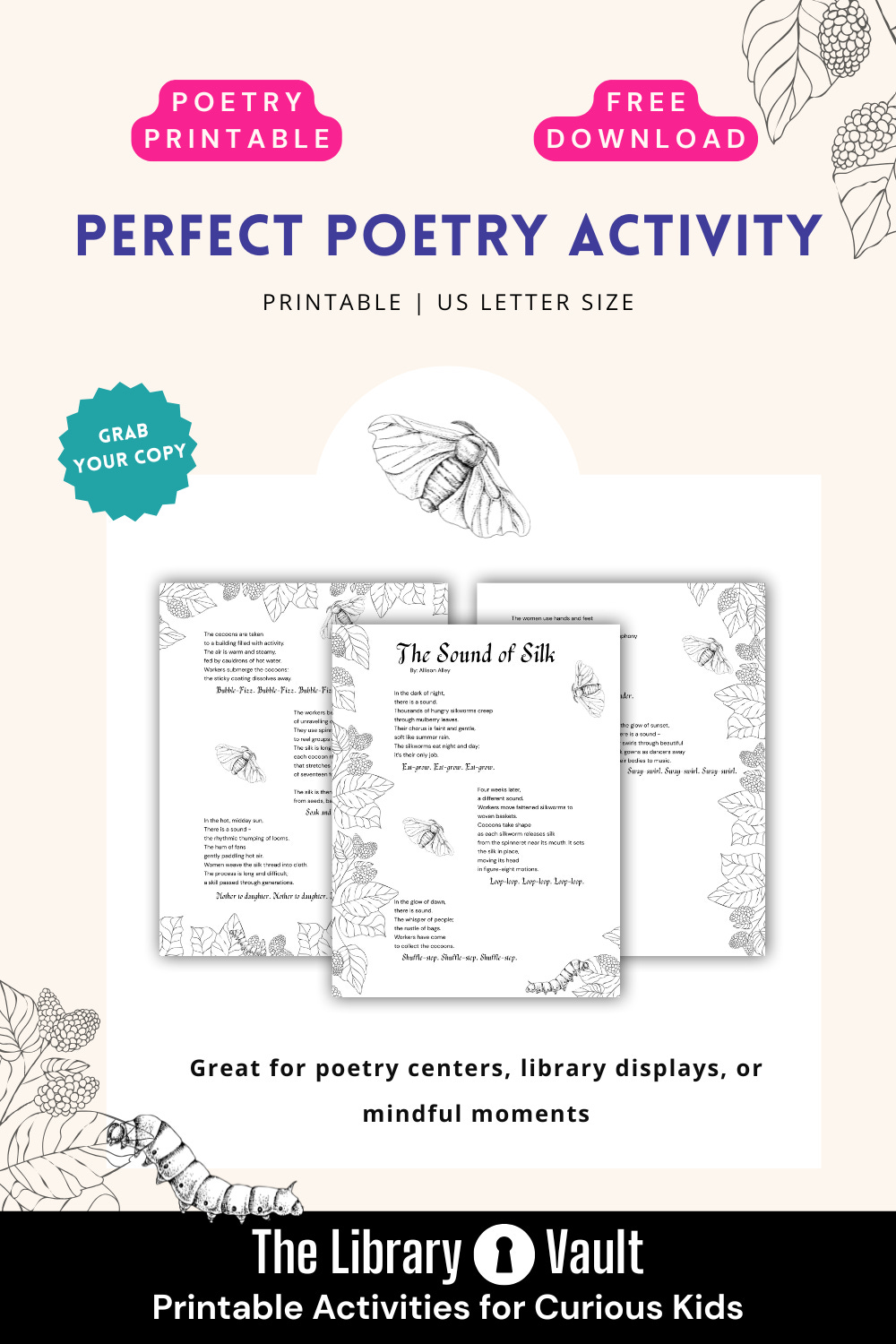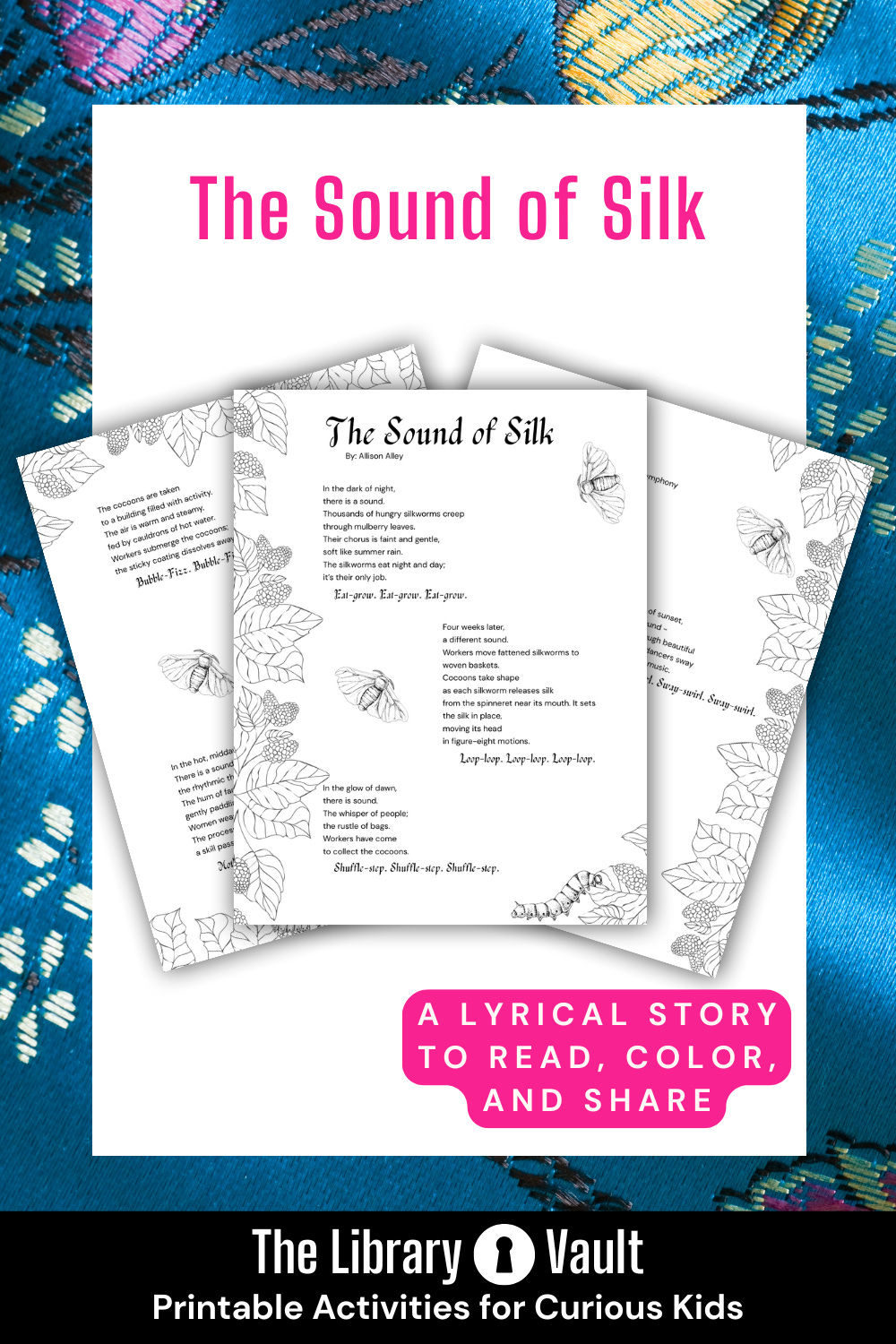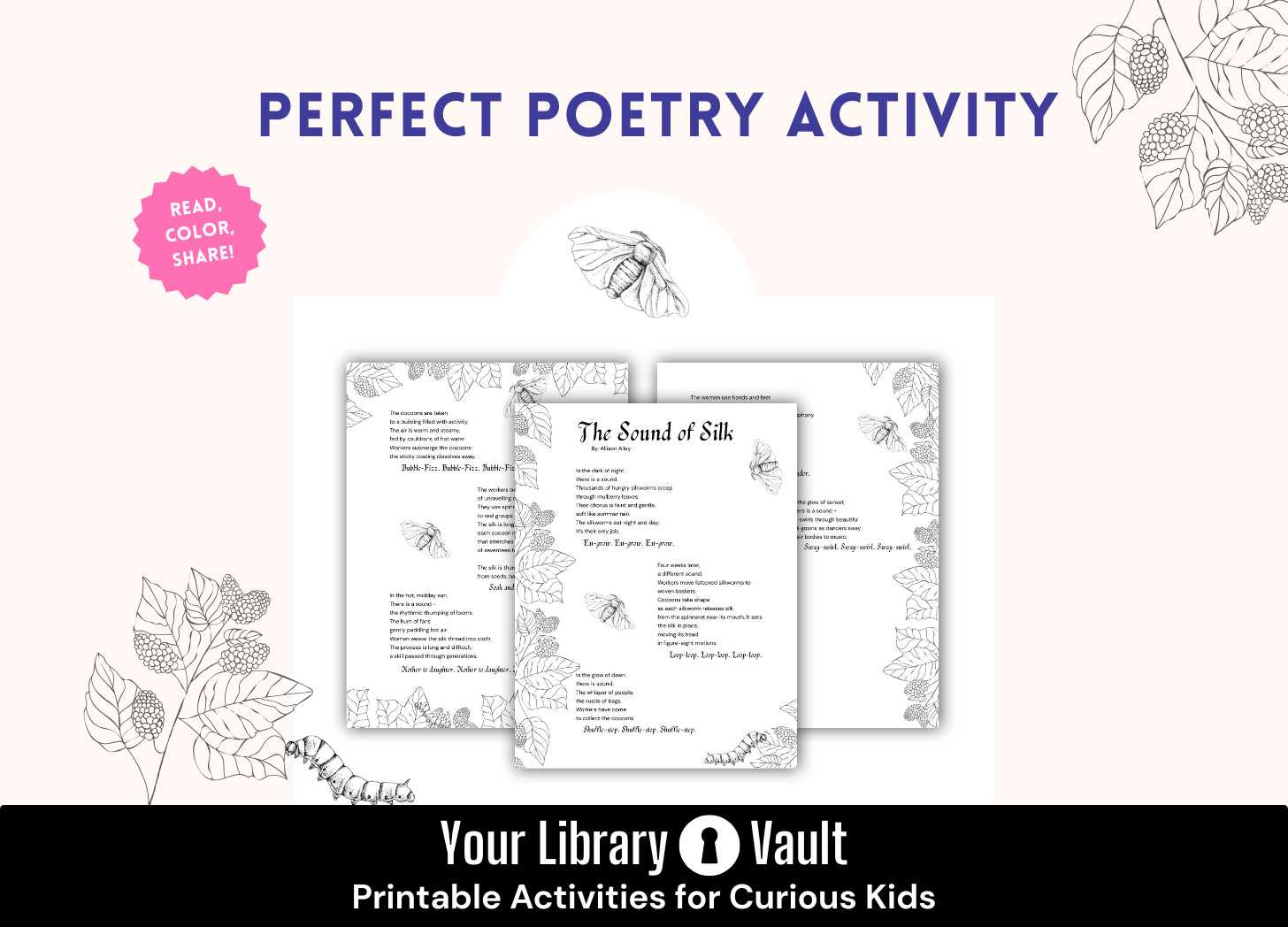A Secret, a Silkworm, and a Story You Can Color
A Lyrical Story to Read, Color, and Share
Hi Friend,
Today I’m thrilled to share something special: The Sound of Silk, a lyrical picture book I wrote nearly a decade ago, and finally brought to life with polish, design, and a sprinkle of bravery.
I first wrote this story after visiting silk-making villages in Cambodia and Myanmar. I can still remember the soft rustle of mulberry leaves, the click-clack of wooden looms, and the glimmer of silk threads stretched in the sun. The process felt timeless, because, in many ways, it is.
Silk has been spun the same way for thousands of years. In ancient China, the origin of silk was a closely guarded secret, so precious that revealing it was punishable by death. Eventually, that shimmering thread unraveled across continents, fueling trade on the famed Silk Road.
Today, silk still supports families around the world, providing not just clothing but, in some regions, food (boiled silkworm pupae are protein-rich snacks!).
But enough facts. I wrote The Sound of Silk to capture a feeling.
And now, after years of letting it sit on my hard drive, I gave it one final polish, added some graphic design magic, and turned it into a printable you can download, display, and color.
To download your copy, simply subscribe to my Substack (it’s totally free!), and the welcome email will include a link to The Library Vault—my growing collection of printable stories and activities.
Grab some colored pencils. This story doubles as a coloring page, with mulberry leaves, silk moths, and silkworms to bring it to life. It's perfect for libraries, homeschool, or quiet afternoon of wonder.
And just in case you can’t wait to read it... here’s the story below.
With wonder,
-Allison
Creator of The Library Vault
P.S. Want to support this project?
🫶 Paid subscriptions launch soon—with exclusive printables every month
📌 Pin it on Pinterest to save + share (use the images in the post!)
❤️ Like & comment on posts
📨 Forward to a librarian friend who’d love it too!
The Sound of Silk
In the dark of night, there is a sound. Thousands of hungry silkworms creep through mulberry leaves. Their chorus is faint and gentle, soft like summer rain. The silkworms eat night and day; it’s their only job. Eat-grow. Eat-grow. Eat-grow. Four weeks later, a different sound. Workers move fattened silkworms to woven baskets. Cocoons take shape as each silkworm releases silk from the spinneret near its mouth. It sets the silk in place, moving its head in figure-eight motions. Loop-loop. Loop-loop. Loop-loop. In the glow of dawn, there is sound. The whisper of people; the rustle of bags. Workers have come to collect the cocoons. Shuffle-step. Shuffle-step. Shuffle-step. The cocoons are taken to a building filled with activity. The air is warm and steamy, fed by cauldrons of hot water. Workers submerge the cocoons; the sticky coating dissolves away. Bubble-Fizz. Bubble-Fizz. Bubble-Fizz. The workers begin the delicate process of unravelling cocoons. They use spinning wheels to reel groups of thread. The silk is long and strong; each cocoon made of one strand that stretches the length of seventeen football fields. Spin-pull. Spin-pull. Spin-pull. The silk is then dyed with natural pigment from seeds, bark, and berries. Soak and swirl. Soak and swirl. Soak and swirl. In the hot, midday sun, There is a sound - the rhythmic thumping of looms. The hum of fans gently paddling hot air. Women weave the silk thread into cloth. The process is long and difficult; a skill passed through generations. Mother to daughter. Mother to daughter. Mother to daughter. The women use hands and feet to operate massive wooden looms. Their movements result in an endless symphony of clicking and clacking. Despite the chaos, the women produce flawless fabrics; each piece is a collage of tiny, interwoven crosses. Over-under. Over-under. Over-under. In the glow of sunset, there is a sound - air swirls through beautiful silk gowns as dancers sway their bodies to music. Sway-swirl. Sway-swirl. Sway-swirl. As the sun rises, there is no sound. But tiny eggs, scattered through mulberry leaves, are proof that something big is about to happen. ~ ~ ~ ~ ~ ~ ~
Looking for Related Children’s Books?
If you're building a library display, planning a thematic unit, or just want to deepen the experience with read-alouds, here are a few books I highly recommend:
Project Mulberry by Linda Sue Park
A contemporary novel about a Korean-American girl, Julia, who’s torn about raising silkworms for a science project—especially because it highlights her cultural background in ways she’s still figuring out. Beautifully written and full of heart, it’s a natural conversation starter about identity, science, and tradition.
The Empress and the Silkworm by Lily Toy Hong
This picture book retells the Chinese legend of Si Ling-Chi, the empress who discovered silk. According to the story, a cocoon dropped into her tea—and began to unravel. A short, illustrated narrative that pairs beautifully with The Sound of Silk.
The Story of Silk: From Worm Spit to Woven Scarves by Richard Sobol
A photo-rich nonfiction book that gives readers a real-world tour of silk production, from rural Thailand to fashion runways. Eye-opening and packed with facts and global context.
Silkworms (Lerner Natural Science Series)
A clear, straightforward nonfiction option ideal for young readers or classroom reference. Great for science centers and visual learners, with strong images of each stage in the life cycle.
Thanks again for stopping by today. Remember to become a free subscriber to access the vault of free printables.




